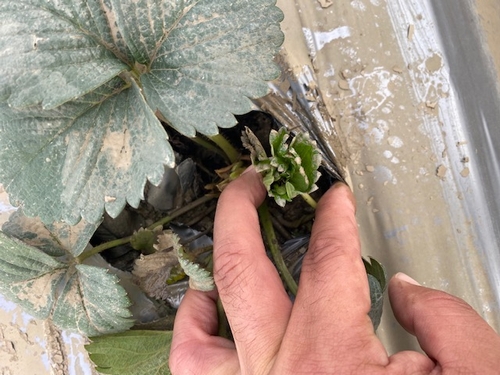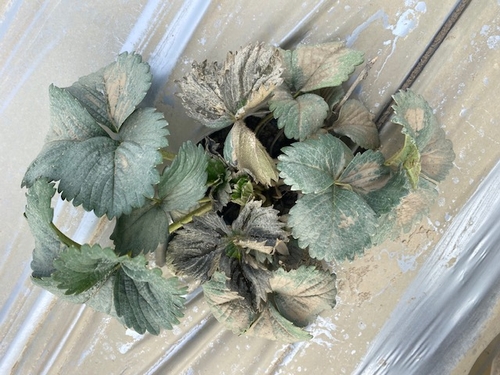The recent flooding on the Central Coast has really put a lot of local strawberry growers in a bad position. Some fields have been underwater several days to a week or more, which has deprived plants of oxygen and sunlight needed for respiration and growth. As these plants try to recover, they will likely be severely set back for several weeks. Other fields that were briefly flooded are silted over and have completely saturated soils.
Looking beyond our current conditions of just too much water, we need think about what the plan of action is going to be going forward into the spring. Since in many areas strawberry plants have been set back because they were in saturated, anaerobic soil, growers will need to turn their attention to jump starting growth in their fields once the ground dries out, and becomes aerobic again.
It will be important at this time to think about nutrition. It's a fair bet that even fields that received pre-plant fertilizer lost a significant amount of nitrogen from the soil during the flooding and unprecedented rains during the last few months. We could be wrong about this, so the first thing growers and farm managers should do once they are back out in the fields is take a soil sample and check the mineral N levels, especially the concentration of nitrate, which is the form of nitrogen that strawberry readily take up. Nitrate-N will also mineralize from the soil organic matter and any organic amendments that were previously incorporated in the soil as the soil becomes oxygenated again. Soil samples should be collected from 8 to 12 locations in the field from the 0 to 12-inch depth in or near the plant row and composited together. A subsample of the composited soil should be analyzed for mineral forms of nitrogen (nitrate and ammonium). We recommend using the soil nitrate quick test to assess the soil nitrate status of your fields in a timely manner. Please refer to this previous article on the how to accurately measure soil nitrate using the quick test. If you intend to send the soil to a laboratory that can quickly analyze the soil, we suggest shipping the soil sample with blue ice so that it stays cold to prevent mineralization of N in transit. The laboratory should analyze the sample for both ammonium and nitrate, the two mineral forms of nitrogen that are in the soil.
If the soil nitrate values are below 10 ppm nitrate-N then the plants will likely benefit from an addition of N fertilizer. Fertilizers containing nitrate forms of N such as CAN-17, UAN32, or ammonium nitrate would be good to add so that the strawberry plants can immediately take up nitrogen, which should help jump start growth. The urea and ammonium contained in fertilizer will also mineralize to nitrate, but due to the recent anaerobic conditions and cold soil temperatures, this process may be slower than normal.
Since this might be the first time that you've run your irrigation system in a while, it'll be good to check before fertigating to ensure that everything is in good order. Check for broken connections between drip lines and the submains (layflat, oval hose). Check that valves and pipes are still connected and unbroken and that the pump is functioning well. These will be all good items to check before putting this system to work after such a long hiatus.
Attached Images:

